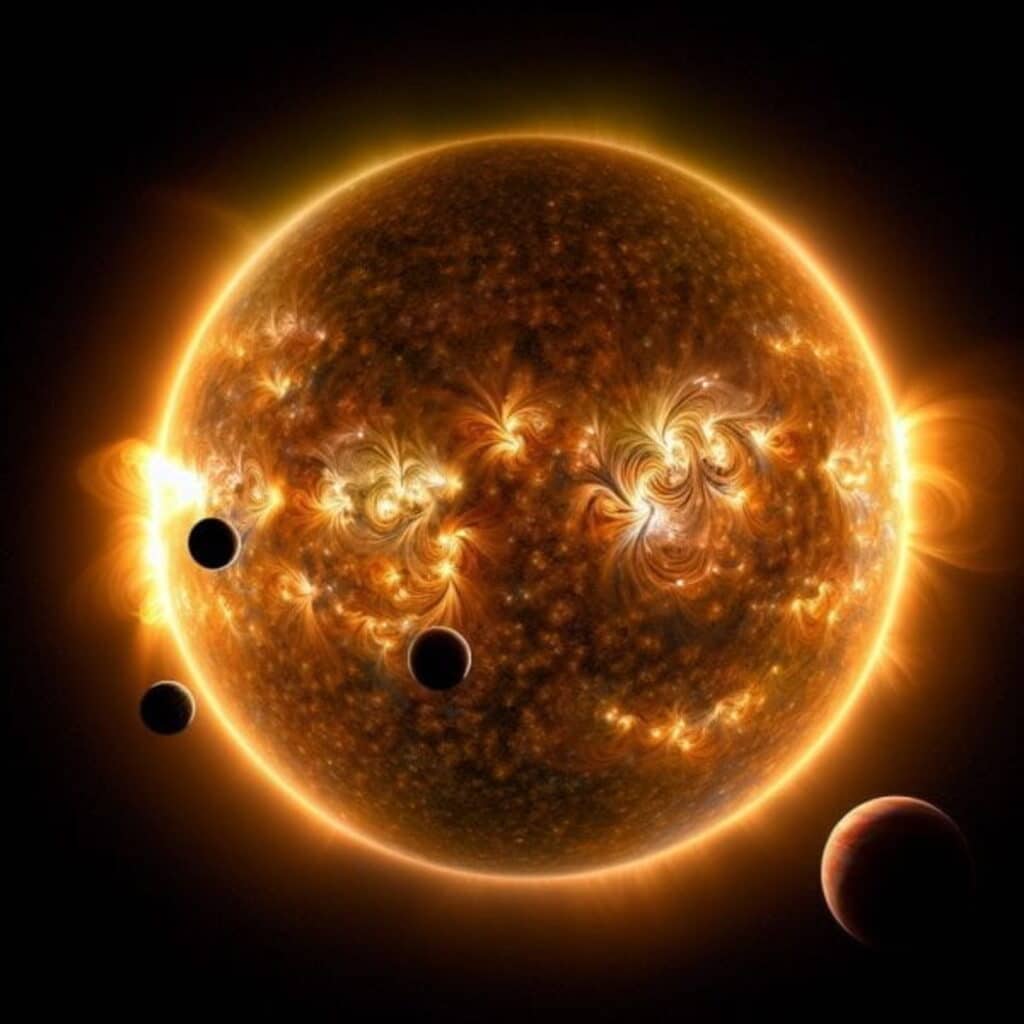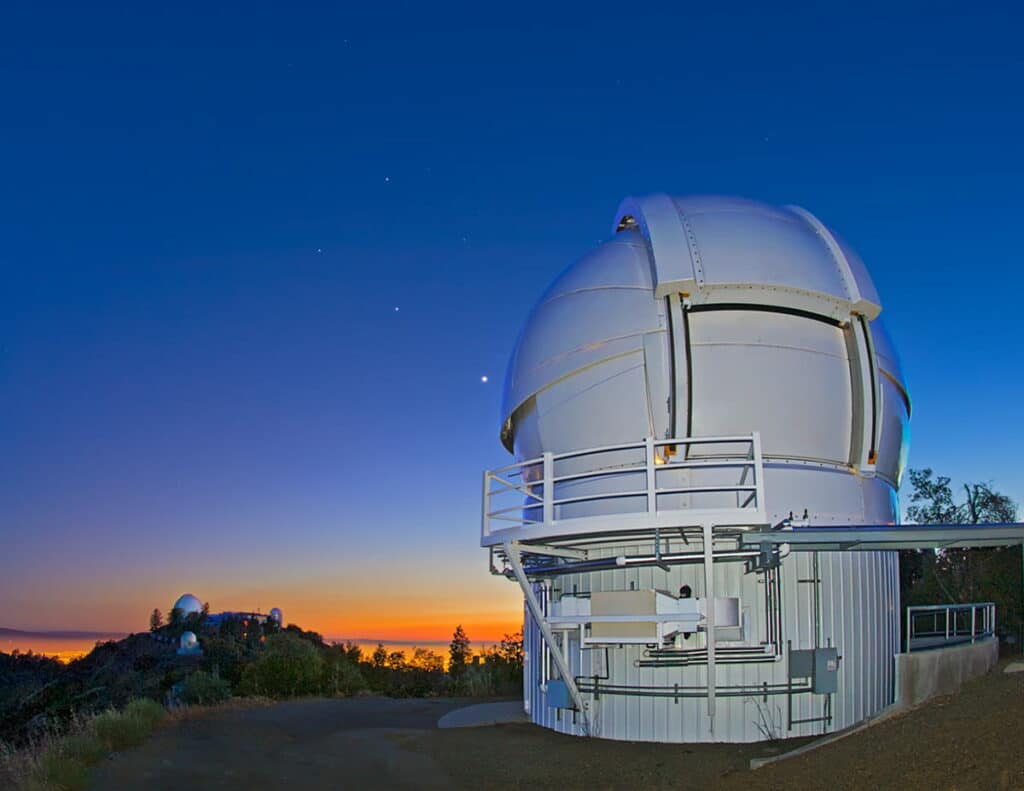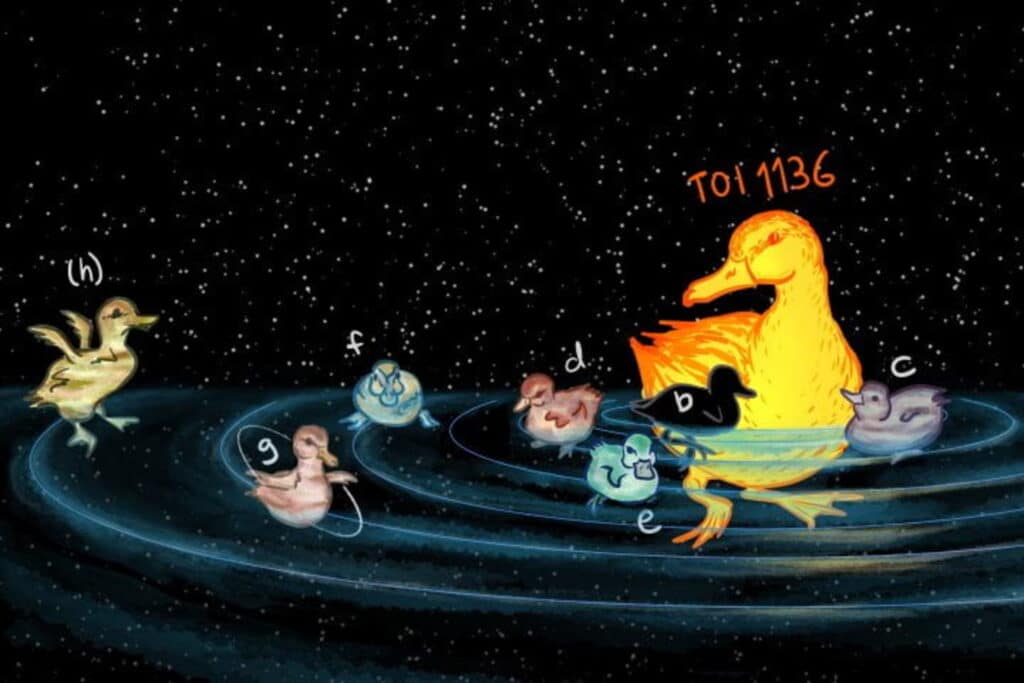Astronomers are beginning to unravel the the mysteries of planet formation after discovering a new solar system. Revolutionizing our understanding of how planets form and evolve, University of California-Irvine (UCI) scientists are offering the most detailed insights yet into a system of at least six exoplanets orbiting TOI-1136, a young dwarf star in the Milky Way, over 270 light-years away from Earth.
The project, part of the TESS-Keck Survey, is a significant advancement from the team’s initial observations in 2019. Back then, using data from the Transiting Exoplanet Survey Satellite (TESS), they first estimated the masses of these exoplanets by observing the gravitational interactions between them, known as transit timing variations (TTV).
However, this latest study combines TTV data with radial velocity analysis — a technique that detects subtle changes in a star’s motion due to the gravitational pull of orbiting planets. This was achieved using sophisticated equipment: the Automated Planet Finder telescope at Lick Observatory on Mount Hamilton, California, and the High-Resolution Echelle Spectrometer at Hawaii’s W.M. Keck Observatory. These instruments allowed astronomers to observe the Doppler effect, where light from the star shifts in color as it moves, indicating the presence and mass of surrounding planets with unprecedented precision.

“”t took a lot of trial and error, but we were really happy with our results after developing one of the most complicated planetary system models in exoplanet literature to date,” says study lead author Corey Beard, a doctoral candidate in physics at UCI, in a media release.
Study co-author Paul Robertson, associate professor of physics & astronomy at UCI, explained the significance of studying a system with multiple exoplanets.
“We viewed TOI-1136 as being highly advantageous from a research standpoint, because when a system has multiple exoplanets, we can control for the effects of planet evolution that depend on the host star, and that helps us focus on individual physical mechanisms that led to these planets having the properties that they do,” notes Robertson.
TOI-1136 is a mere 700 million years old, making it a relatively young star by cosmic standards. This youth presents both challenges and opportunities, as such stars are more active, with intense magnetism, sunspots, and solar flares. These factors play a crucial role in shaping the planets’ atmospheres and overall characteristics.
The system’s confirmed exoplanets, named TOI-1136 b to g, are classified as “sub-Neptunes,” with sizes ranging from twice to four times the radius of Earth. All of them orbit their star in less time than it takes Mercury to orbit our Sun. This proximity suggests a densely packed solar system, vastly different from our own.

“They’re weird planets to us because we don’t have anything exactly like them in our solar system,” explains study co-author Rae Holcomb, a UCI doctoral candidate in physics. “But the more we study other planet systems, it seems like they may be the most common type of planet in the galaxy.”
Adding to the intrigue is the possible existence of a seventh planet, hinted at by gravitational interactions observed in the system. These interactions, which Robertson likened to resonant chords on a piano, can either destabilize or stabilize planetary orbits.
“When you hear a chord played on a piano and it sounds good to you, it’s because there is resonance, or even spacing, between the notes that you’re hearing,” says Robertson. “The orbital periods of these planets are spaced similarly. When the exoplanets are in resonance, the tugs are in the same direction every time. This can have a destabilizing effect, or in special cases, it can serve to make the orbits more stable.”
The study has spurred researchers to delve deeper, especially into the composition of the planets’ atmospheres. This pursuit is optimally suited for NASA’s James Webb Space Telescope, known for its advanced spectroscopy capabilities.
“I am proud that both UCO’s Lick Observatory and the Keck Observatories were involved in the characterization of a really important system,” says Matthew Shetrone, deputy director of University of California Observatories. “Having so many moderate-sized planets in the same system really lets us test formation scenarios. I really want to know more about these planets! Might we find a molten rock world, a water world and an ice world all in the same solar system? It almost feels like science fiction.”
The study is published in The Astronomical Journal.













Comments